Related Research Articles
Commander Chambré George William Penn Curzon, known as George Curzon, was a Royal Navy commander, actor, and father of the present Earl Howe.

Frank Chin is an American author and playwright. He is considered to be one of the pioneers of Asian-American theatre.

Chinaman's chance is an American idiom which means that a person has little or no chance at success, synonymous with similar idioms of improbability such as a snowball's chance in hell or when pigs fly. Although the origin of the phrase is unclear, it may refer to the historical misfortunes which were suffered by Chinese-American immigrants. The expression is controversial due to its use of the term "Chinaman".
Chinaman is an offensive term referring to a Chinese man or person, or widely a person native to geographical East Asia or of perceived East Asian ethnicity. The term is noted as having pejorative overtones by modern dictionaries. Its derogatory connotations evolved from its use in pejorative contexts regarding Chinese people and other East Asians, as well as its grammatical incorrectness which resembles stereotypical characterizations of Chinese accents in English-speaking associated with discrimination. The usage of the term Chinaman is strongly discouraged by Asian American organizations.
Murder at Covent Garden is a 1932 British crime film directed by Leslie S. Hiscott and starring Dennis Neilson-Terry, Anne Grey, George Curzon and Walter Fitzgerald. It was made at Twickenham Studios. The screenplay involves a detective who investigates the murder of a night club owner.

A Royal Divorce is a 1938 British historical drama film directed by Jack Raymond and starring Ruth Chatterton, Pierre Blanchar and Frank Cellier. The film portrays the complex relationship between Napoleon I of France and his wife, Josephine Bonaparte from their first meeting until their divorce more than a decade later. It was shot at Denham Studios in Buckinghamshire. The film's sets were designed by the art director David Rawnsley.
The Chinese Puzzle is a 1932 British crime film directed by Guy Newall and starring Leon M. Lion, Austin Trevor, Lilian Braithwaite, Elizabeth Allan and Francis L. Sullivan.
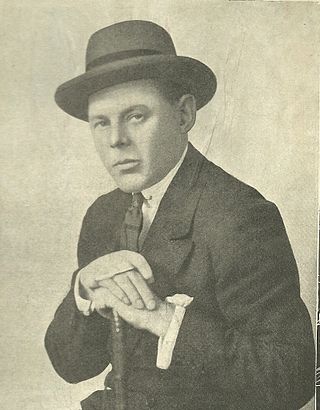
Guy Newall was a British actor, screenwriter and film director. He was born on the Isle of Wight on 25 May 1885. He began his film career by acting in the 1915 film The Heart of Sister Ann. In 1920 he directed his first film, and went on to direct a further ten including The Chinese Puzzle before his death in 1937. He established a production company with George Clark whom he had met during the First World War, and they raised finance to construct a new studios at Beaconsfield Studios. Newall was married twice, to actresses Ivy Duke and Dorothy Batley.
The Rosary is a 1931 British drama film directed by Guy Newall and starring Margot Grahame, Elizabeth Allan and Leslie Perrins. It was shot at Twickenham Studios in London. The film's sets were designed by the art director James A. Carter. It was released as an independent first feature, despite being produced by a company that generally concentrated on quota quickies.
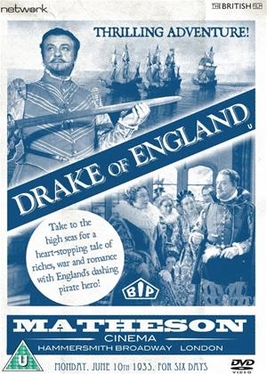
Drake of England is a 1935 British drama film directed by Arthur B. Woods and starring Matheson Lang, Athene Seyler and Jane Baxter. It depicts the life of Francis Drake and the events leading up to the defeat of the Armada in 1588.

The Scotland Yard Mystery is a 1934 British crime film directed by Thomas Bentley and starring Sir Gerald du Maurier, George Curzon, Grete Natzler, Belle Chrystall and Wally Patch. The screenplay concerns a criminal doctor who operates a racket claiming life insurance by injecting victims with a life suspending serum turning them into living dead. The film is based on a play by Wallace Geoffrey. It was made by one of the biggest British companies of the era, British International Pictures, at their Welwyn Studios.

The Impassive Footman is a 1932 British, low-budget "quota quickie" drama film directed by Basil Dean and starring Owen Nares, Betty Stockfeld, Allan Jeayes and George Curzon. The film's sets were designed by Edward Carrick. It was also released under the alternative title Woman in Bondage.
Trouble is a 1933 British comedy film directed by Maclean Rogers and starring Sydney Howard, George Curzon and Dorothy Robinson. It was made at British and Dominion Elstree Studios.
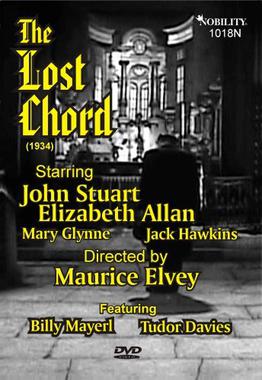
The Lost Chord is a 1933 British drama film directed by Maurice Elvey and starring John Stuart, Elizabeth Allan and Jack Hawkins. The screenplay concerns a musician who becomes embroiled in the domestic rows of an aristocratic family. It was inspired by the Arthur Sullivan song The Lost Chord. Two earlier films directed by Wilfred Noy, The Lost Chord (1917) and The Lost Chord (1925), were both also based on the song. The film was made at Twickenham Studios.
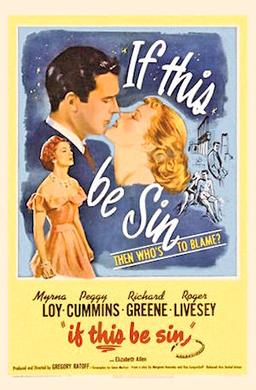
That Dangerous Age is a 1949 British romance film directed by Gregory Ratoff and starring Myrna Loy, Roger Livesey and Peggy Cummins. It was adapted from the play Autumn by Margaret Kennedy and Ilya Surguchev. The film was released under the alternative title of If This Be Sin in the United States. It was shot at Shepperton Studios and on location in London and Capri. The film's sets were designed by the art director Andrej Andrejew.

Under the Greenwood Tree is a 1929 British sound part-talkie historical drama film directed by Harry Lachman and starring Marguerite Allan, Nigel Barrie and Wilfred Shine. It is an adaptation of the 1872 novel Under the Greenwood Tree by Thomas Hardy.
Insult is a 1932 British drama film directed by Harry Lachman and starring Elizabeth Allan, John Gielgud and Hugh Williams. It is an adaptation of a play by Jean Fabricus. It is a melodrama set in the French Foreign Legion in North Africa.
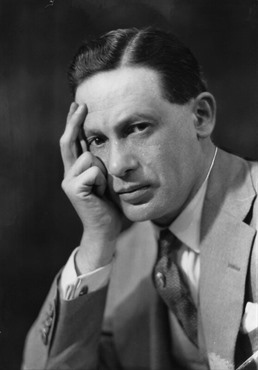
Leon Marks Lion was an English stage and film actor, playwright, theatrical director and producer. He starred in Joseph Jefferson Farjeon's 1925 hit play Number 17 as well as its subsequent 1932 film adaptation by Alfred Hitchcock.

Love, Life and Laughter is a 1934 British comedy drama film directed by Maurice Elvey and starring Gracie Fields, John Loder and Ivor Barnard.
James A. Carter was a British art director and occasional film producer.
References
- ↑ Wood p.71